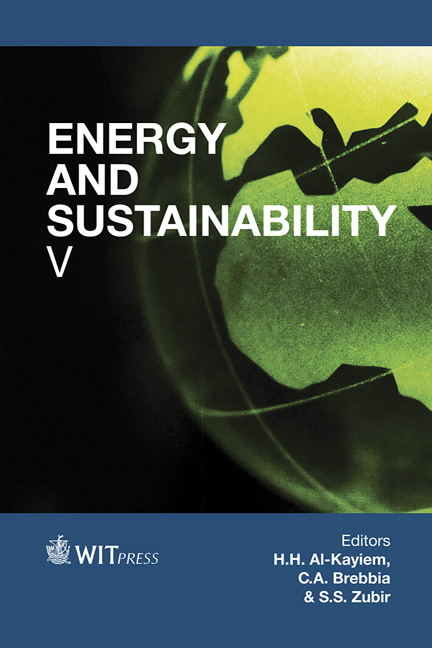Experimental And Numerical Study On Ground Material Absorptivity For Solar Chimney Power Applications
Price
Free (open access)
Transaction
Volume
186
Pages
12
Page Range
219 - 230
Published
2015
Size
591 kb
Paper DOI
10.2495/ESUS140191
Copyright
WIT Press
Author(s)
S. S. Al-Azawie, S. Hassan, M. F. Zammeri
Abstract
A solar chimney power plant utilizes the ground as its energy conversion medium from solar radiation to kinetic energy in the adjacent air stream. In this work, the conversion capability of six different ground materials, that are potentially available in Malaysia, were studied experimentally and numerically. An experimental setup was constructed to acquire measured data. A numerical model was constructed in the FLUENT software environment to model and simulate the energy conversion process. The selected materials were ceramic, black stone, sawdust, dark green painted wood (DGPW), sand and pebble. The simulation results showed good consistency with the experimental results in terms of the air stream velocity and the energy conversion efficiency. The ceramic and black stone have shown better performance upon the other materials. In particular, the ceramic medium has shown another advantage to its solar radiation absorptivity – its heat storage capability. However, due to its availability, black stone is recommended for use as the absorbing material in the solar chimney in Malaysia and regional countries.
Keywords
absorptivity, absorption materials energy conversion, convective heat transfer, solar chimney, solar energy





